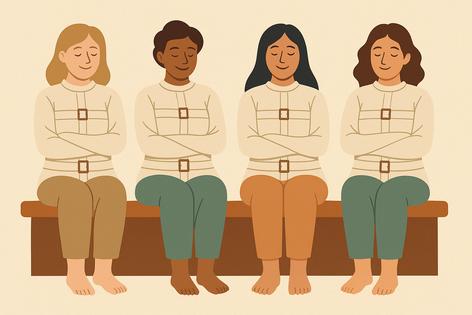All Strapped In and Nowhere to Go: The Surprising Upside of Stillness
Published in Health & Fitness
Wearing a straitjacket has long been associated with asylums, stage escapes, and pop culture caricatures. Yet in recent years, some clinicians, therapists, and researchers have begun to examine the garment with more nuance. In therapeutic, experimental, and recreational contexts, carefully controlled use of straitjackets may offer surprising benefits—from stress relief to sensory regulation—so long as users recognize the serious risks involved.
A Hug You Can’t Break
Dr. Ellen Margrave, a psychiatrist at St. Anne’s Behavioral Health Center, describes the straitjacket’s core appeal as “a form of enforced stillness that mimics the pressure of a weighted blanket, but on a deeper level.”
Margrave said some of her patients with severe anxiety or obsessive-compulsive behaviors responded well to short, supervised sessions. “The garment provides containment,” she said. “It stops the body from acting on every compulsion and gives the mind a chance to rest. When properly supervised, the experience can be grounding.”
This sense of stillness can also help with insomnia. Some clinics in Europe have experimented with “restraint therapy,” in which patients wore light or modified straitjackets for 30 to 60 minutes before bed. The results showed reduced restlessness and quicker onset of sleep, though researchers caution it is not a one-size-fits-all treatment.
Focus in a Distracted World
For Dr. Rajesh Patel, a neurologist at the University of Toronto, the benefit lies in focus. He compares the straitjacket to noise-canceling headphones, but for the body.
“In our era of constant stimulation, some people seek radical ways to reduce distraction,” Patel said. “Immobilization in a straitjacket, under professional supervision, strips away motor activity. It can sharpen the mind’s focus, creating a meditative or trance-like state.”
Patel emphasized that this effect is not mystical. “When muscles stop moving, the nervous system has less to track. The brain can direct more resources inward, whether to meditation, problem-solving, or stress processing.”
Patel does not recommend people use straitjackets unsupervised. “The danger of being trapped is real,” he said. “But in structured sessions, with clear release protocols, it can be a tool—not a threat.”
Building Trust Through Surrender
The relational aspect is also part of the story. Dr. Marisol Ortega, a clinical psychologist based in Los Angeles, has worked with couples who integrate restraint into therapeutic practice.
“Being in a straitjacket is an act of surrender,” Ortega said. “For some patients, especially those working through control issues or trauma, it creates an exercise in trust. You literally cannot free yourself. You must rely on someone else. That experience can be healing when it happens in a safe, consensual environment.”
Ortega pointed to a recent case in which a patient with post-traumatic stress disorder gained confidence by practicing supervised stillness in a straitjacket while a trusted partner remained nearby. “It wasn’t the garment itself that healed her,” Ortega said. “It was what the garment represented—permission to stop fighting, to let go.”
Potential Dangers
All three doctors stressed the risks. A straitjacket is not a toy, and unsupervised use can quickly become hazardous.
Margrave noted that individuals attempting to use a straitjacket alone may overestimate their ability to escape. “It’s easy to get into, but much harder to get out of once straps are tightened,” she said. “We have documented cases of individuals requiring emergency services after becoming stuck.”
Patel warned that circulation and breathing can also be compromised if garments are worn too long or strapped improperly. “Even 30 minutes can lead to numbness if straps compress the arms or chest. The risks increase if no one else is present to monitor.”
Self-bondage enthusiasts sometimes experiment with straitjackets, but Ortega cautioned strongly against it. “Every fatality I’ve seen in restraint-related cases occurred when someone was alone,” she said. “The risk of entrapment without assistance is simply too high.”
A Controversial Future
Despite the dangers, some clinicians argue for further study. Margrave believes controlled trials could shed light on non-pharmaceutical ways to treat agitation and sleeplessness. Patel thinks neuroscience may one day offer wearable alternatives that provide similar stillness cues without full restraint. Ortega suggests the garment may serve best as a relational tool, in therapy settings where trust and consent are paramount.
What all three agree on is that the straitjacket, once a symbol of cruelty, may have overlooked potential as a therapeutic instrument—if used carefully, ethically, and never in isolation.
“Like many tools,” Margrave said, “it’s neither good nor bad on its own. It depends entirely on context, consent, and care.”
========
This article was written, in part, utilizing AI tools.










Comments